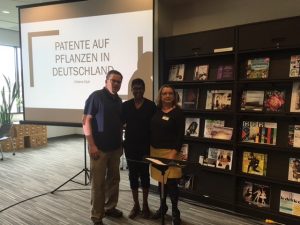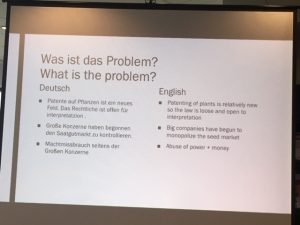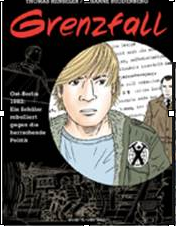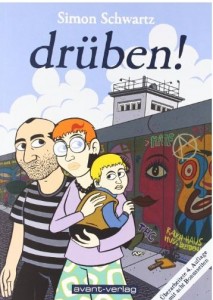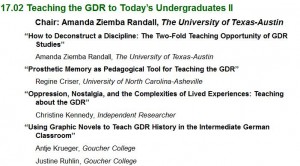von Rebecca Kotula (’17)
Zionskirche
Die Zionskirche in Baltimore scheint von außen wie jede andere Kirche zu sein, aber sie ist tatsächlich voll von einer reichen deutschen Geschichte. Baltimore hat Glück, weil sie einen sehr interessanten Teil der deutschen Kultur besitzt. Die Zionskirche hat viele Hindernisse im Laufe der Jahre überwunden. Es ist sehr beeindruckend, dass sie heute noch steht. Nicht nur steht sie noch; sie floriert. Eine Diskussion mit Reverend Roggelin zeigt viele von den Triumphen und Leiden der frühen Zionskirche.
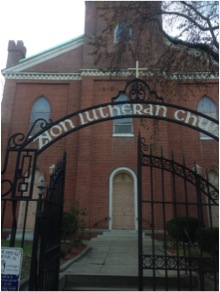 Am Anfang war es nicht leicht für die Deutschen. Sie wollten eine Kirche bauen, die sie ihr eigen nennen konnten. Leider hatten sie nicht viel Geld. Die erste Zionskirche war nicht viel mehr als ein Schulgebäude. Sie haben sie 1762 gebaut. Sie war klein, aber von vielen geliebt. Sie hatten ihre erste Kirche mit ihrem ersten Pfarrer-Pastor Kirchner. Es war nicht viel, aber die Leute waren damit sehr glücklich.
Am Anfang war es nicht leicht für die Deutschen. Sie wollten eine Kirche bauen, die sie ihr eigen nennen konnten. Leider hatten sie nicht viel Geld. Die erste Zionskirche war nicht viel mehr als ein Schulgebäude. Sie haben sie 1762 gebaut. Sie war klein, aber von vielen geliebt. Sie hatten ihre erste Kirche mit ihrem ersten Pfarrer-Pastor Kirchner. Es war nicht viel, aber die Leute waren damit sehr glücklich.
Um 1804 ist Zion Church enorm gewachsen. Seit 1794 hatten sich die Gemeindemitglieder verdoppelt- in nur zehn Jahren. Die Kirche wurde schnell zu klein. Im Jahr 1806 kündigte der Kirchenvorstand seine Entscheidung an, eine neue Kirche zu bauen. Jeder in der Gemeinde erkannte, dass es notwendig war. Spenden kamen von vielen verschiedenen Stellen. Im gleichen Jahr wurde Land gekauft, auf dem die neue Kirche gebaut werden sollte. Am 9. Oktober 1808 eröffnete die neue Kirche. Der Pfarrer war sehr glücklich. Er hatte auf diesen Tag viele Jahre gewartet. Die Kirche ist für viele Jahre gewachsen, um in diese Position zu kommen. Und schließlich wurde es Zeit für eine weitere Veränderung.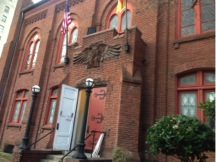
Im Februar 1903 wollte der Pastor, Pastor Julius Hofman, einige Änderungen an der Innenausstattung der Kirche vornehmen. Fünf Jahre später wurden seine Pläne realisiert. Viele große Änderungen wurden an der Innenausstaltung der Kirche gemacht. Das hat die Kirche in einen freundlichen und einladenden Ort verwandelt. Nachdem diese Renovierungen vorgenommen wurden, gab es eine weitere Veränderung, die sie machen wollten. Sie wollten ein Gemeindehaus bauen. Pastor Hofman hat sehr viel an diesem Projekt gearbeitet. Es war sehr wichtig für ihn. Am Anfang war die Gemeinde dagegen. Doch bald erkannten sie, wie wichtig dieses Projekt war. Sie kämpften, um das Geld für das neue Gebäude zu finden. Schließlich wurde es im Jahr 1913 abgeschlossen. Auf diesem Gebäude befand sich ein sehr wichtiges Symbol. Es ist ein amerikanischer Adler, der einen deutschen Adler an seinem Herz zeigt. Es war ein Symbol für die Beziehung der deutschen Einwanderer und Amerika.
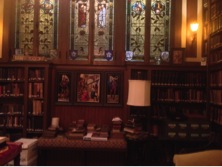 Diese Gebäude sind die gleichen, die heute noch stehen. Die Kirche ist weiter gewachsen. Sie haben viele Renovierungsprojekte geplant. Sie arbeiten an der Wiederherstellung der Bibliothek. Sie machen auch digitale Kopien von all ihren Büchern und Aufzeichnungen. Das wird ein sehr langfristiges Projekt sein. Sie sammeln auch Geld für viele Dinge, einschließlich einer Orgel, einem Aufzug und einer Klimaanlage. Im Ganzen versuchen sie, ihr Heiligtum zu renovieren. Mit Hilfe von ihrer Gemeinde und der Unterstützung von der Stadt Baltimore werden sie ihre Wiederherstellung abschließen.
Diese Gebäude sind die gleichen, die heute noch stehen. Die Kirche ist weiter gewachsen. Sie haben viele Renovierungsprojekte geplant. Sie arbeiten an der Wiederherstellung der Bibliothek. Sie machen auch digitale Kopien von all ihren Büchern und Aufzeichnungen. Das wird ein sehr langfristiges Projekt sein. Sie sammeln auch Geld für viele Dinge, einschließlich einer Orgel, einem Aufzug und einer Klimaanlage. Im Ganzen versuchen sie, ihr Heiligtum zu renovieren. Mit Hilfe von ihrer Gemeinde und der Unterstützung von der Stadt Baltimore werden sie ihre Wiederherstellung abschließen.
Die Kirche bietet viele Aktivitäten und Gruppen, die heute aktiv sind. Sie ist offen für amerikanische und deutsche Leute und organisiert viele Veranstaltungen- nicht nur Gottesdienste. Zum Beispiel, gibt es Anfang Dezember einen deutschen Weihnachtsmarkt, der sehr lustig und für die ganze Familie ist. Zionskirche ist ein toller Ort für jeden in Baltimore und immer einen Besuch wert. Man kann echte deutsche Kultur sehen, die direkt im Herzen von Amerika erhalten ist.
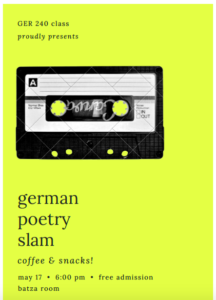 writing poetry? How can poetry contribute to successful second language learning?
writing poetry? How can poetry contribute to successful second language learning?
